Did you know that a staggering 80% of missed shots among amateur players are due to poor billiard positioning ? Whether you’re just picking up a cue stick or already battling seasoned competitors, understanding how to control the cue ball and master patterns and positioning could revolutionize your experience on the pool table. Today, you’ll uncover the expert secrets behind position play —the key difference between frustrating misses and fluid run-outs. If you’re ready to unlock consistency and strategy in your game of pool, let's get started.
Start Winning: The Impact of Billiard Positioning on Your Game
-
A surprising 80% of missed shots among amateur players are due to poor billiard positioning. Unlock the primary elements that separate seasoned competitors from frustrated beginners.
The journey from casual player to skilled pool shark is defined by one crucial skill: billiard positioning . Beginners often focus solely on sinking the ball in the pocket, but expert players know it’s not just about making your next shot—it’s about setting up the one after that. Each stroke isn’t just about potting an object ball; it’s a calculated move to place the cue ball in a good spot for future shots. This repositioning creates opportunity sequences that can have a dramatic effect on your score and game flow.
Imagine playing a straight pool match where poor billiard positioning leaves your cue ball stuck against the rail after every shot, making it difficult to maintain a good position. Suddenly, even the simplest shots become high-risk. In contrast, proficient position play lets you leave the cue ball in ideal zones, making subsequent shots routine. That’s why professional players spend hours drilling not just shot-making, but also the subtleties of cue ball control. If you want to get ahead—whether you dream of clearing the table in a single inning or just winning more friendly games—mastering patterns and positioning is essential.
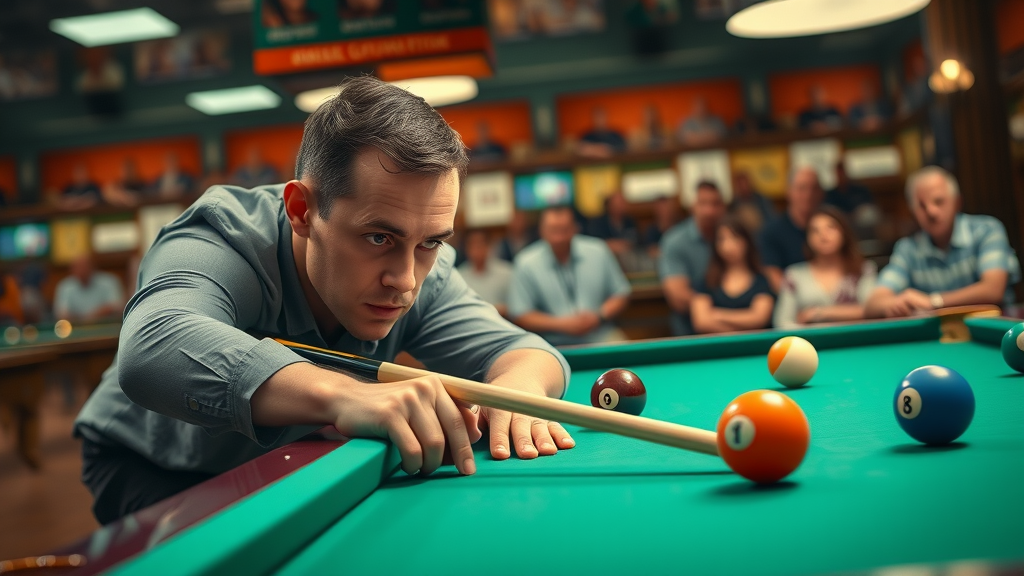
Understanding Billiard Positioning: Mastering Cue Ball Patterns and Position Play
Defining Billiard Positioning and Its Importance
-
Break down key terms: billiard positioning, cue ball, position play, patterns and positioning.
At its core, billiard positioning involves manipulating the cue ball’s journey after every strike. The cue ball is the white ball that a player strikes to hit object balls into pockets. Position play refers to your ability to not just make a shot, but to guide the cue ball into prime locations for subsequent attempts. The language here— patterns and positioning —is more than jargon. Patterns are pre-planned ball paths, while positioning is about placing the cue for optimal follow-up.
These terms matter because they dictate the outcome of an entire match. When you understand how patterns and positioning interact, you transition from relying on chance to controlling the game. Expert pool players study how to position the cue ball so that difficult or “bank” shots are minimized, enabling a chain of simpler, high-probability shots. This strategic thinking changes your relationship with the playing surface and transforms every rack you play.
Patterns and Positioning: Setting Up for Success
-
Explore how proper cue ball control creates consistent shot opportunities.
Proper cue ball control is the linchpin of effective position play and mastering basic patterns, enabling players to maintain a good position throughout the game. By recognizing the preferred patterns on the pool table, players can seamlessly string together shots. When a player understands both basic and advanced pattern routes, making your next shot becomes almost automatic. Think of patterns and positioning as your personal map; once you’ve charted the course, execution becomes less stressful and more instinctive.
Much like chess, skilled straight pool or 8-ball is about planning three or more moves ahead. Consistent cue ball placement reduces common mistake scenarios like scratching or getting “hooked” behind object balls. When you watch videos of professional players, you’ll notice that they always leave the cue ball in good spots to increase their scoring opportunities and minimize risks. This level of awareness, honed through deliberate practice, is what fuels exceptional runs at the table.
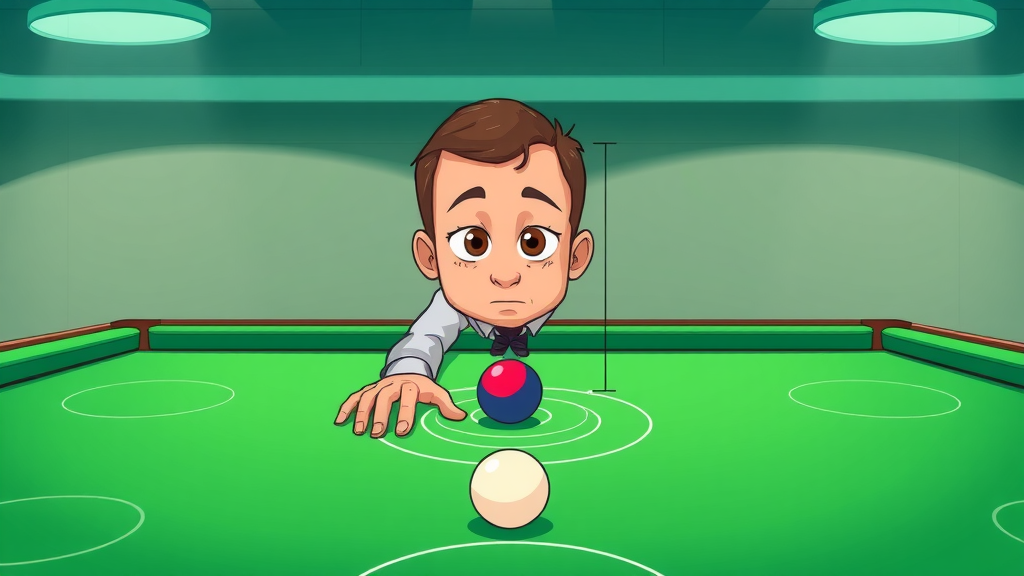
What You'll Gain by Mastering Billiard Positioning
-
Sharpen cue ball placement strategy
-
Reduce common mistakes beginners make
-
Boost position play for advanced players
-
Understand basic patterns and advanced pattern routes
Mastering billiard positioning promises several game-changing payoffs. First, you’ll sharpen your approach to cue ball placement , transforming wild shots into controlled, strategic plays. Players who pay attention to every cue ball journey will quickly see their consistency and shot selection improve. Second, by internalizing patterns and positioning , you’ll naturally sidestep the mistakes that beginners make, such as leaving the cue ball in awkward places or misjudging table angles.
Both beginners and advanced players benefit from streamlined position play . Newer pool players can focus on basic pattern drills to lock in muscle memory, while elite competitors refine advanced pattern routes for tough table layouts. As your understanding of patterns in billiards grows, you’ll be better equipped to read the playing surface, position the cue ball, and execute run-outs that were previously elusive.
Basic Patterns and Position Play: Laying the Foundation
Essential Patterns for Beginners
-
Identify basic patterns and how they prevent common mistake scenarios.
For beginners, embracing basic patterns is a transformative first step that helps avoid common mistakes and establishes strong position play habits. Basic patterns include simple shot sequences that keep the cue ball on the open side of the table, avoiding clusters and tricky angles. Practicing these allows players to sidestep the common mistake of leaving the cue ball blocked by object balls or rails, which is the downfall of many beginner runs. Simple drills—such as potting balls in a row from one end of the table to the other—build the foundation for reliable position play .
When you understand basic patterns , you naturally start leaving the cue ball in good spots. For example, after making a straight-in shot, positioning the cue for the next easy angle becomes second nature. The more familiar you become with patterns and positioning, the easier it gets to maintain control throughout your game.
Good Position: Ensuring the Next Shot is Easier
-
Techniques for maintaining optimal position after every shot.
Achieving and maintaining a good position is crucial for both beginners and advanced players to ensure smooth position play and consistent shot opportunities. The goal is to always leave the cue ball in a spot that simplifies the next shot. One proven technique is the “stop shot,” where the cue ball comes to a halt after impact, setting up another straight-in shot. Another valuable strategy is the following or draw shot, where the cue ball rolls forward or draws back, depending on the desired position for subsequent object balls.
Practicing these basics on the playing surface, such as setting up three to five balls in a line and focusing on controlling the cue ball, helps internalize the value of good position. Over time, you’ll notice you’re able to construct easier patterns, reduce the likelihood of missing due to awkward placements, and enjoy a smoother, more productive game of pool.
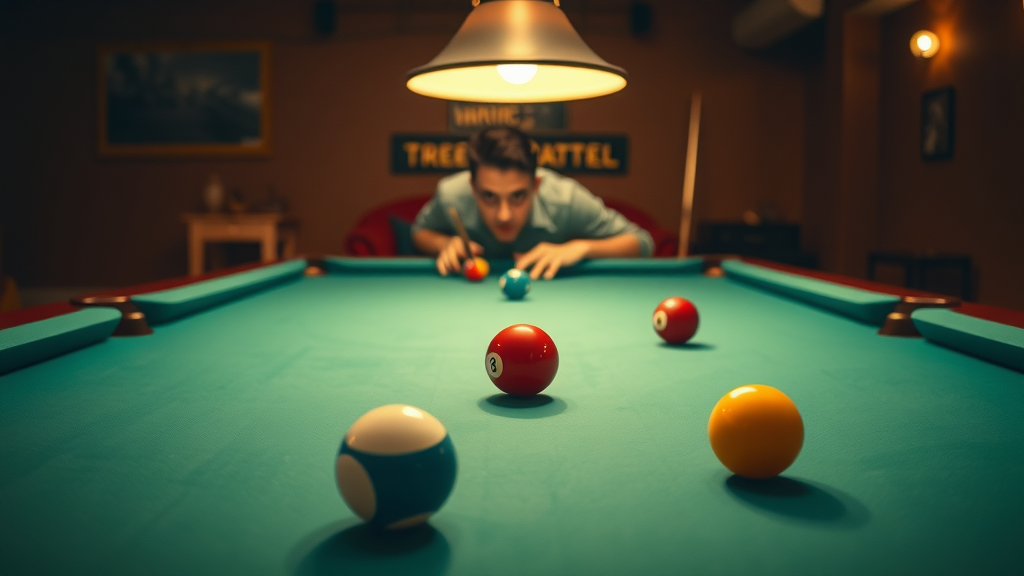
Advanced Patterns and Positioning for Advanced Players
Transition from Basic Patterns to Advanced Patterns
-
How advanced players visualize multi-shot sequences using position play.
Once comfortable with basic patterns , advanced players elevate their skills by employing advanced patterns . These involve visualizing several shots ahead and manipulating the cue ball’s path to sequence multiple object balls. Advanced position play often incorporates side spin, stun shots, and calculated angles to traverse complex table layouts. For example, a seasoned player will assess the cluster of object balls, identifying which sequence minimizes risky positions and optimizes the shot flow.
This kind of play is seen frequently in professional tournaments, where the difference between a good position and a perfect one can mean the difference between an ordinary inning and a break-and-run. By meticulously watching videos of professional players, you can pick up subtle techniques for crafting advanced pattern routes and see how champions consistently transform tough layouts into scoring opportunities.
Anticipating Table Layouts and Dynamic Cue Ball Positioning
-
Adapting patterns and positioning to unpredictable ball spreads.
True mastery of billiard positioning lies in adaptability. While beginners often rely on fixed sequences, advanced players excel at adjusting their strategy mid-game, no matter how the balls are spread across the playing surface. A prime skill is being able to recognize when a table layout demands deviation from standard patterns and requires imaginative cue ball management.
Through a combination of foresight and in-game analysis, top pool players can create new patterns on the fly, ensuring that even after a missed attempt or unexpected carom, the cue ball is still in a good spot. Advanced drills involve practicing under varied and random table layouts, which builds the confidence and creativity required to dominate any game of pool.
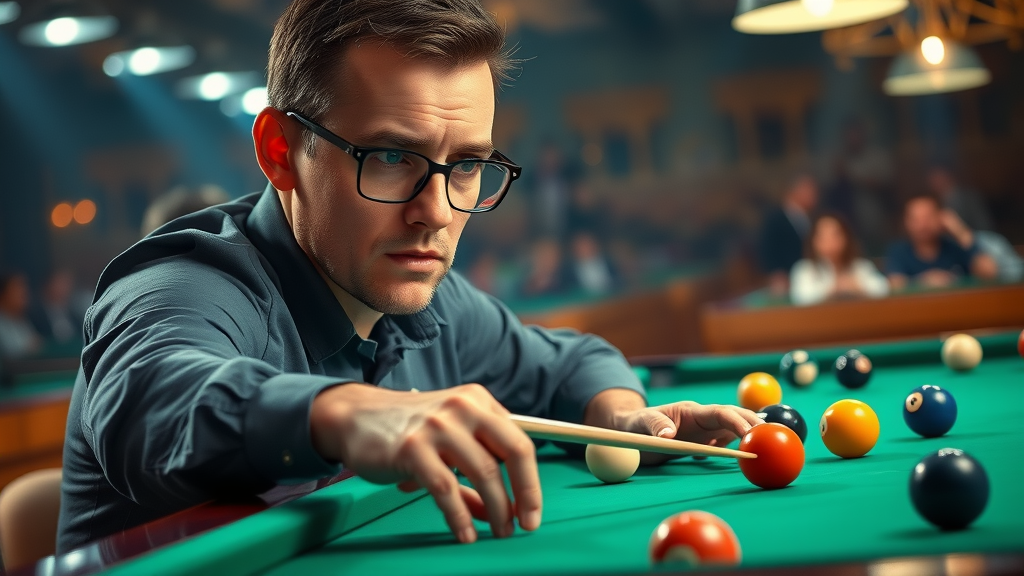
Avoiding Common Mistakes: What Beginners Make in Billiard Positioning
Recognizing and Correcting the Most Common Mistake
-
Top errors in cue ball control and position play that beginners make.
Among the most prevalent common mistakes beginners make are over-hitting or under-hitting the cue ball, neglecting to plan for the next shot, and failing to control the cue ball’s path after pocketing an object ball. These common mistakes often leave the cue ball rattling against the rails or hiding behind other balls—a surefire way to lose momentum. Many such mistakes stem from focusing too much on the shot at hand, without a clear idea of patterns and positioning for what comes next.
To avoid these pitfalls, players should actively visualize their intended position for the cue ball before every shot. By watching videos of professional players, you can see how they never leave the cue ball stranded in tough spots. Practicing deliberate position play , where you only progress if you leave the cue ball in a good spot, will help you internalize positive habits and eradicate these rookie blunders.
Building Good Positioning Habits
-
Simple drills to reinforce good positioning behaviors.
The path to strong position play and mastering basic patterns comes from focused repetition and deliberate practice. Start with simple drills: set up two balls a few feet apart and practice potting one into a corner while guiding the cue ball to position for the next shot. Use “ghost ball” practice methods (imagining a ball where you need to contact the cue), and add visual markers to represent your target zones. Another key drill is the “line drill,” where you pocket balls in succession, always aiming to leave the cue ball in the next optimal pattern.
Consistently review your performance by recording your practice sessions. Analyzing these recordings can help you spot recurring mistakes and monitor your progress. By ingraining these patterns into your subconscious, maintaining good position will become second nature and dramatically lift your ability to control the pool table.
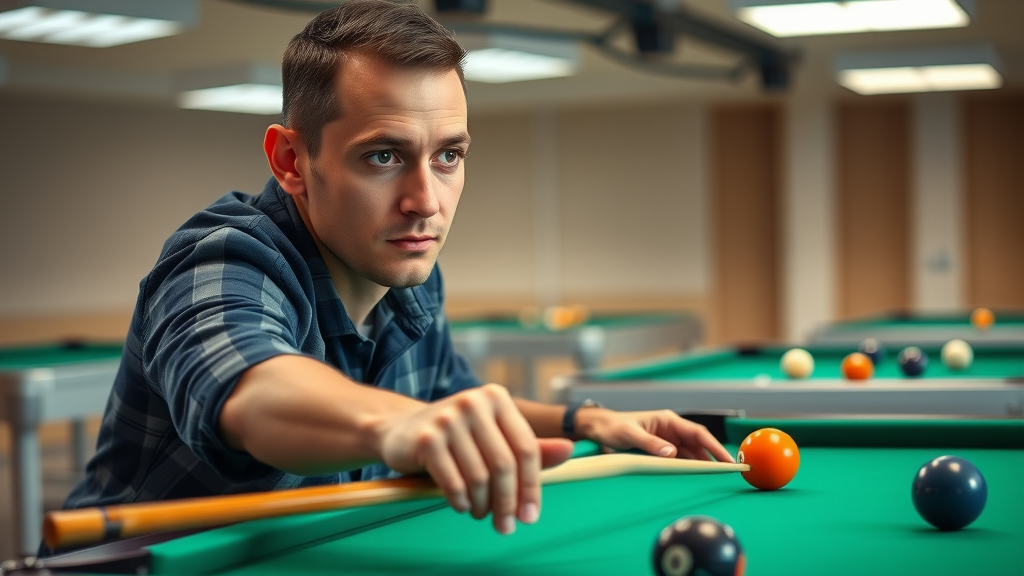
Table: Essential Patterns and Positioning Techniques at a Glance
|
Technique |
Skill Level |
Key Benefit |
Typical Mistake Avoided |
|---|---|---|---|
|
Basic Pattern |
Beginner |
Consistency |
Missed Shape |
|
Position Play |
All Levels |
Shot Setup |
Over-rolling |
|
Advanced Pattern |
Advanced |
Runout Potential |
Table Layout Misreading |
Perspectives from Pro Players: Quotes on Billiard Positioning and Position Play
"Great position play is what separates champions from the rest. Every shot is a setup for the next." - Professional Billiards Champion
"Patterns and positioning aren't just about potting balls, it’s about running tables—one smart step at a time." - Elite Pool Coach
Frequently Asked Questions About Billiard Positioning
What is the correct posture for billiards?
-
The correct posture ensures balanced weight distribution and optimal cue ball control, both vital to effective billiard positioning.
Proper posture in billiards requires you to adopt a stable and well-balanced stance. Both feet should be planted firmly, with your weight evenly distributed. Your body should feel relaxed, allowing you full range of motion with the cue while keeping your head directly over the shot line. This posture not only enhances cue ball control but also prevents fatigue and fosters consistency with every stroke.
What is the correct position of billiard balls?
-
Proper ball position starts with understanding patterns and positioning, allowing for smoother position play and easier next shots.
The correct position of billiard balls on the table is a result of precise patterns and positioning . Ideally, after every shot, your cue ball should come to rest in a location that presents a clear, manageable shot on your next object ball. By internalizing this principle and practicing deliberate position play, you’ll routinely leave yourself with opportunities for straightforward sequences, rather than scramble shots from difficult angles.
What is the correct position for pool?
-
The best pool position involves aligning your cue, eyes, and stance to anticipate not just your current shot, but also the subsequent patterns.
Optimal pool position includes both where your cue ball lands and how you set yourself up for the shot. A well-aligned stance aims at the intended target with your eyes squarely focused on the cue ball path. Anticipate subsequent shot patterns, and adjust your bridge hand, grip, and follow-through so each stroke not only executes the shot at hand but also positions the cue ball effectively for the next pattern.
What is the 2 finger rule in pool?
-
The 2 finger rule helps maintain good position by setting a consistent striking reference for cue ball contact, crucial for repeatable patterns.
The 2 finger rule is a practical alignment technique where the space between your bridge hand and the cue ball is roughly two fingers wide. This approach helps you consistently strike the cue ball in a reliable manner, crucial for developing repeatable patterns and positioning . Practicing the 2 finger rule trains muscle memory and improves your accuracy, making it easier to plan and execute precise shots.
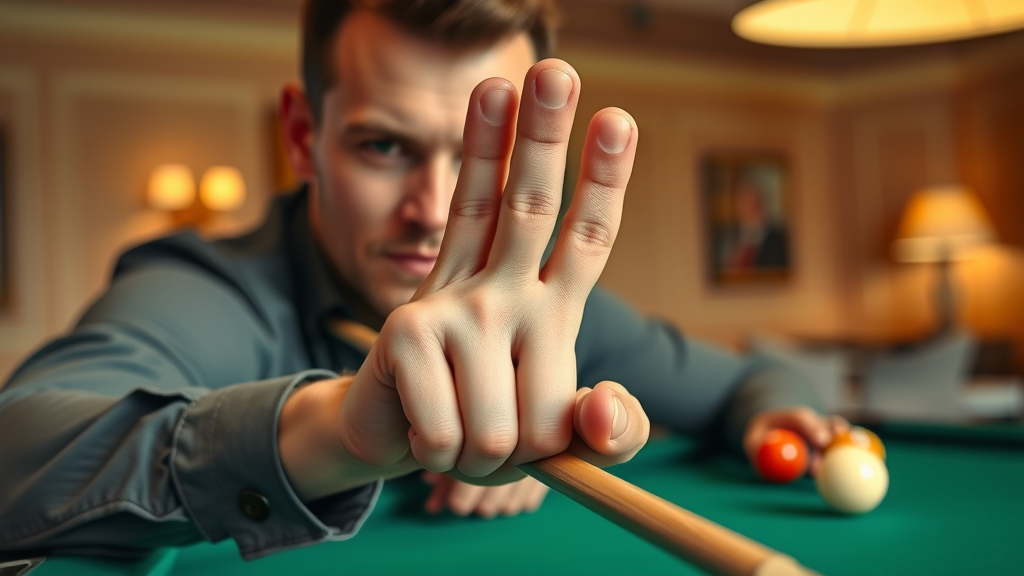
Game-Changing Strategies: Lists of Drills and Tips for Maximizing Billiard Positioning
-
Practice basic patterns across the table repeatedly
-
Rehearse advanced patterns under different table layouts
-
Analyze cue ball outcomes after every shot for improved position play
-
Use video recording to spot common mistake trends in your own play
Incorporating structured drills into your routine is essential for advancing your billiard positioning, improving position play, and mastering both basic and advanced patterns . Start each practice session with a focus on basic pattern drills—potting balls in sequence and leaving the cue ball in good spots across the pool table. As you increase your skill level, challenge yourself with advanced patterns that require creative solutions for tough table layouts. After each shot, pause to analyze where the cue ball stopped and whether it supports your next intended shot. Recording and reviewing your games is invaluable; by watching videos of professional players and your own sessions, you can detect patterns in billiards, common mistake trends, and areas that need attention for continuous improvement.
Master Billiard Positioning for Immediate Improvement
-
Apply the best practices, avoid known mistakes, and start controlling your games with strategic patterns and precise position play.
If you’re serious about elevating your game of pool, put these strategies to work by focusing on patterns and positioning, avoiding common mistakes, and refining your position play. Make deliberate practice of patterns and positioning your new standard. Avoid the common mistakes that beginners make, watch videos of professional players, and continually refine your position play technique. With focus and repetition, you’ll soon see your time at the table transformed by confident, game-winning decisions.
 Add Row
Add Row  Add
Add 
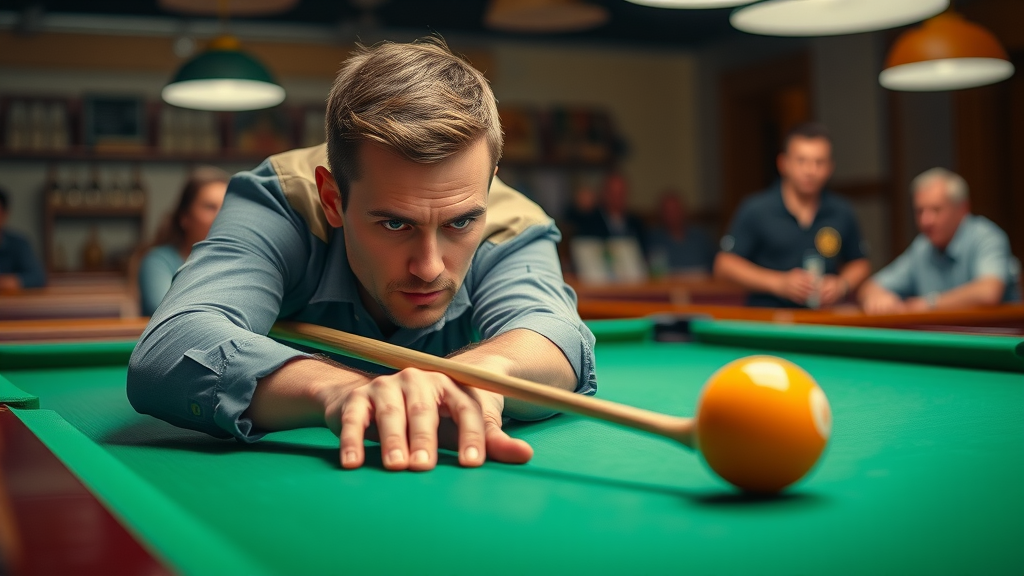
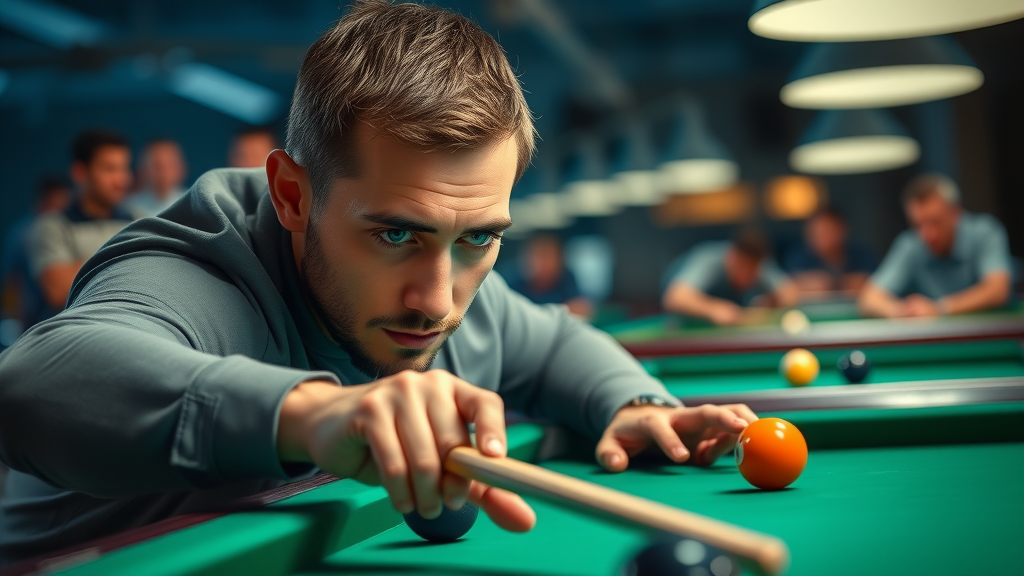
Write A Comment